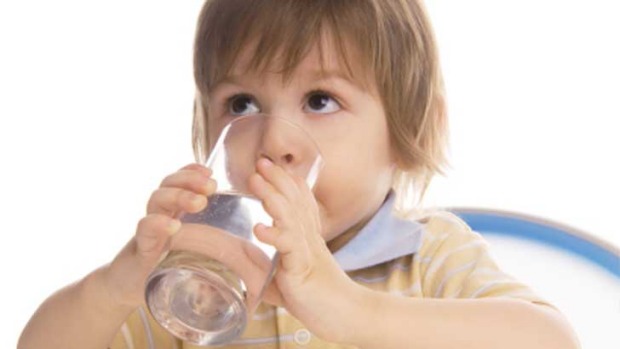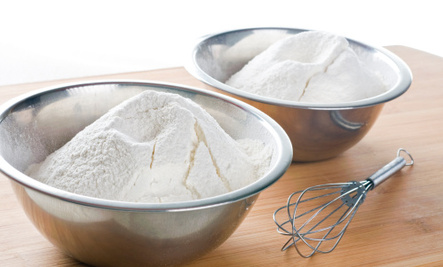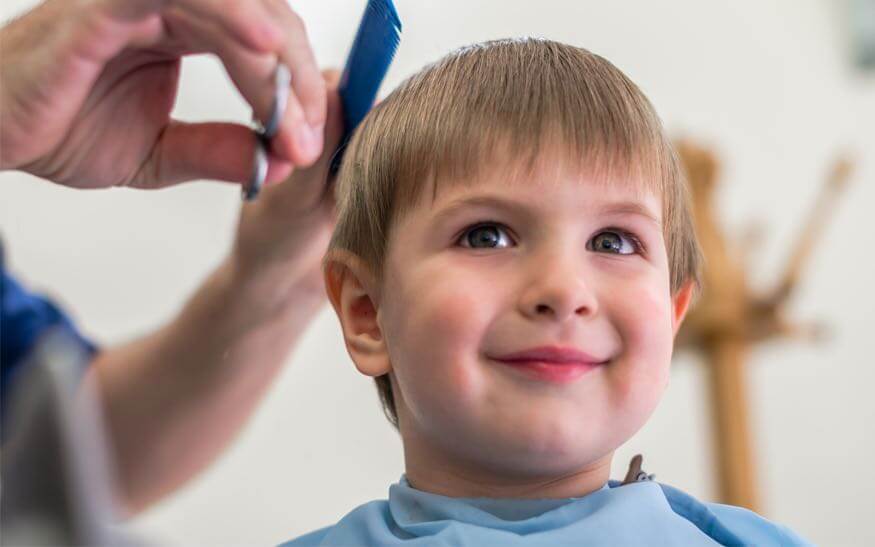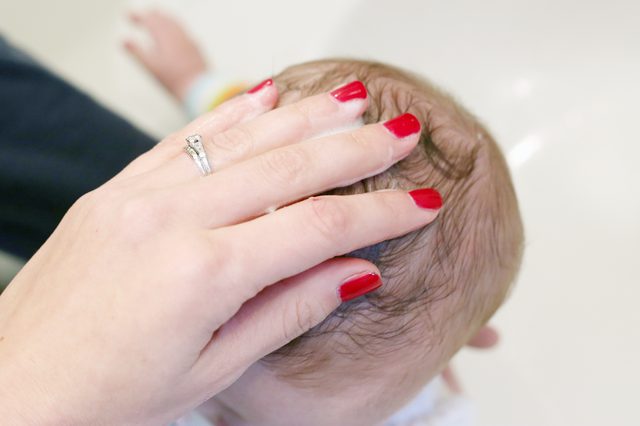As your baby grows, you may wonder how her hair will change. Toddler hair growth rate differs from one child to the next, but as it grows the locks will need extra care and attention. Your patience may get tested from time to time, especially when her hair seems to have a mind of its own. However, in time, her hair will be all set for cute new haircuts and ponytails.

What Is the Normal Growth Rate for Toddler Hair?
On average, toddler hair growth rate is about an inch every four months. For anywhere between two and six years, the hair will grow from follicles before going through a resting phase. This phase will extend over three months. Once complete, your child will lose up to 100 strands of hair a day. The thickness of the hair depends on the follicles. Narrow follicles produce fine hair, while large follicles grow thick hair. There are several ways to help your child grow healthy hair. Things to consider are a good diet, health issues, nutrition and stress factors.
How to Stimulate Hair Growth in Toddler
1. Avoid Junk Food
How a child’s hair appears is a good indication of her overall well-being. Toddler hair growth rate is greatly affected by the diet she eats. Junk food will make her hair brittle, dull and dry. However, a diet rich in nutrients will promote hair production. Orange and yellow fruits and vegetables are full of vitamin A, which is known to help stimulate scalp glands. Vitamin C and E make hair strong and full. Add foods like strawberries, carrots, oranges, green leafy vegetables, beets and tomatoes to her diet when possible.
2. Keep Toddler Hydrated
 Soda and other carbonated beverages can make your toddler’s hair brittle and dull. When your toddler is properly hydrated, her hair will reflect it. It is okay to have a glass or two of juice per day, but water is best. Try to incorporate five to six glasses of water each day in your child’s diet.
Soda and other carbonated beverages can make your toddler’s hair brittle and dull. When your toddler is properly hydrated, her hair will reflect it. It is okay to have a glass or two of juice per day, but water is best. Try to incorporate five to six glasses of water each day in your child’s diet.
3. Add Eggs and Protein
Protein, especially when it comes from eggs, helps promote hair growth and postpone the resting phase. Make your toddler eggs for breakfast each day. Eggs and protein are rich in manganese, biotin, B vitamins, L-cysteine and other nutrients good for hair. Fish, chicken and lean cuts of meat are good choices, too.
4. Limited Refined and White Flour
 Instead of white bread, pasta and crackers made from refined flour, opt for those made from whole grains. They are full of biotin and other B vitamins, which stimulate the production of keratin. Hair is made of keratin protein. These nutrients also regulate hormones that affect toddler hair growth rate and protect follicles.
Instead of white bread, pasta and crackers made from refined flour, opt for those made from whole grains. They are full of biotin and other B vitamins, which stimulate the production of keratin. Hair is made of keratin protein. These nutrients also regulate hormones that affect toddler hair growth rate and protect follicles.
5. Add Fatty Acids
The health of your child’s hair is affected by the consumption of essential fatty acids, omega-9 fatty acids and omega-3 fatty acids. They are so effective, fatty acids are key ingredients in several products for hair care. These nutrients are found in fish, olive oil and organic beef. Avoid trans and saturated fats.
6. Incorporate Zinc and Iron
 If your toddler’s iron and zinc levels are low, it can lead to the loss of hair. You can avoid a deficiency by adding food rich in these nutrients to your child’s diet. Consider feeding her lean pork, beef, chicken, pumpkin, leafy green vegetables, bran, enriched cereals, blackstrap molasses and sunflower seeds as a means to get more of these key minerals.
If your toddler’s iron and zinc levels are low, it can lead to the loss of hair. You can avoid a deficiency by adding food rich in these nutrients to your child’s diet. Consider feeding her lean pork, beef, chicken, pumpkin, leafy green vegetables, bran, enriched cereals, blackstrap molasses and sunflower seeds as a means to get more of these key minerals.
7. Condition Hair
As your toddler’s hair grows, it is important to properly care for what she does have on her head. Let your child’s air dry whenever possible to protect it from the damage of a hairdryer. Try to avoid washing her hair every day so you do not strip its natural oils. Make sure to use hair conditioner, taking time to use a deep conditioner once a month. Do not use a hair brush on her wet hair, opting for a wide-tooth comb instead.
8. Treat Fungal Infections
Toddler hair growth rate can be greatly affected by scalp fungal infections. They cause hair to fall out and affect the overall well-being of your child’s scalp and skin. Ringworm, a contagious infection, is commonly found in children. Another disorder to consider is alopecia, which is associated with tight braids. Both cause loss of hair. You must see a medical professional for treatment and needed medication.
9. Keep It Neat While It Grows
Your toddler’s hair can become unruly while it grows out, but the process will run a lot smoother if you keep it neat while it does. At first, she may fight you, especially as you comb and style it with ribbons, hair bands, bows and barrettes. However, with time, you can turn these sessions into bonding moments. When keeping her hair neat and tidy while it grows, you are also helping to promote hair growth.
10. Give It Time
Sometimes it takes a while for a child’s hair to grow out. Not all children are born with a thick head of beautiful locks. Many only have a little bit of fuzzy hair and won’t have a considerable amount until they reach 3 years old. Others grow long hair quickly. Some toddlers might have uneven hair due to growth patterns. No matter your toddler hair growth rate, with enough time it will grow long and healthy.
11. Trim When Necessary
 As your toddler’s hair grows, it is important to trim it once in a while. It will keep it neat and help keep it healthy. If you choose to do it yourself, make sure to pick a time when she is usually in a good mood and rested. You will want to make sure she is not hungry or the session won’t last more than a few minutes. If you have a professional do it, she can sit on your lap if needed so you can distract her attention. All your child will need is a trim to take off the uneven and dry ends so it should not take long. A toddler has very little patience for a long haircut.
As your toddler’s hair grows, it is important to trim it once in a while. It will keep it neat and help keep it healthy. If you choose to do it yourself, make sure to pick a time when she is usually in a good mood and rested. You will want to make sure she is not hungry or the session won’t last more than a few minutes. If you have a professional do it, she can sit on your lap if needed so you can distract her attention. All your child will need is a trim to take off the uneven and dry ends so it should not take long. A toddler has very little patience for a long haircut.
12. Gelatin Promotes Hair Growth
Known by few, gelatin is good for your hair. It contains glycine and proline, two amino acids key to hair growth and a healthy immune system in infants. You will especially need to treat your child’s hair and scalp with these essential nutrients if her diet consists of mostly liquid carbohydrates. Combine gelatin powder with warm water, a teaspoon of honey and a teaspoon of apple cider vinegar. Massage it on your toddler’s scalp, leaving it for 3-5 minutes. Simply shampoo as normal afterwards. Repeat with each hair washing as needed.
13. Massage Oil in Scalp
 If you are having a problem with toddler hair growth rate, it may be a scalp issue. If your child has a dry scalp, she may scratch it to a point it results in hair loss. You can massage oil into her scalp to prevent dryness and itchiness. It will also stimulate hair production. Types of oil to consider include baby oil and castor oil. Some baby oils are enhanced with almond oil.
If you are having a problem with toddler hair growth rate, it may be a scalp issue. If your child has a dry scalp, she may scratch it to a point it results in hair loss. You can massage oil into her scalp to prevent dryness and itchiness. It will also stimulate hair production. Types of oil to consider include baby oil and castor oil. Some baby oils are enhanced with almond oil.
